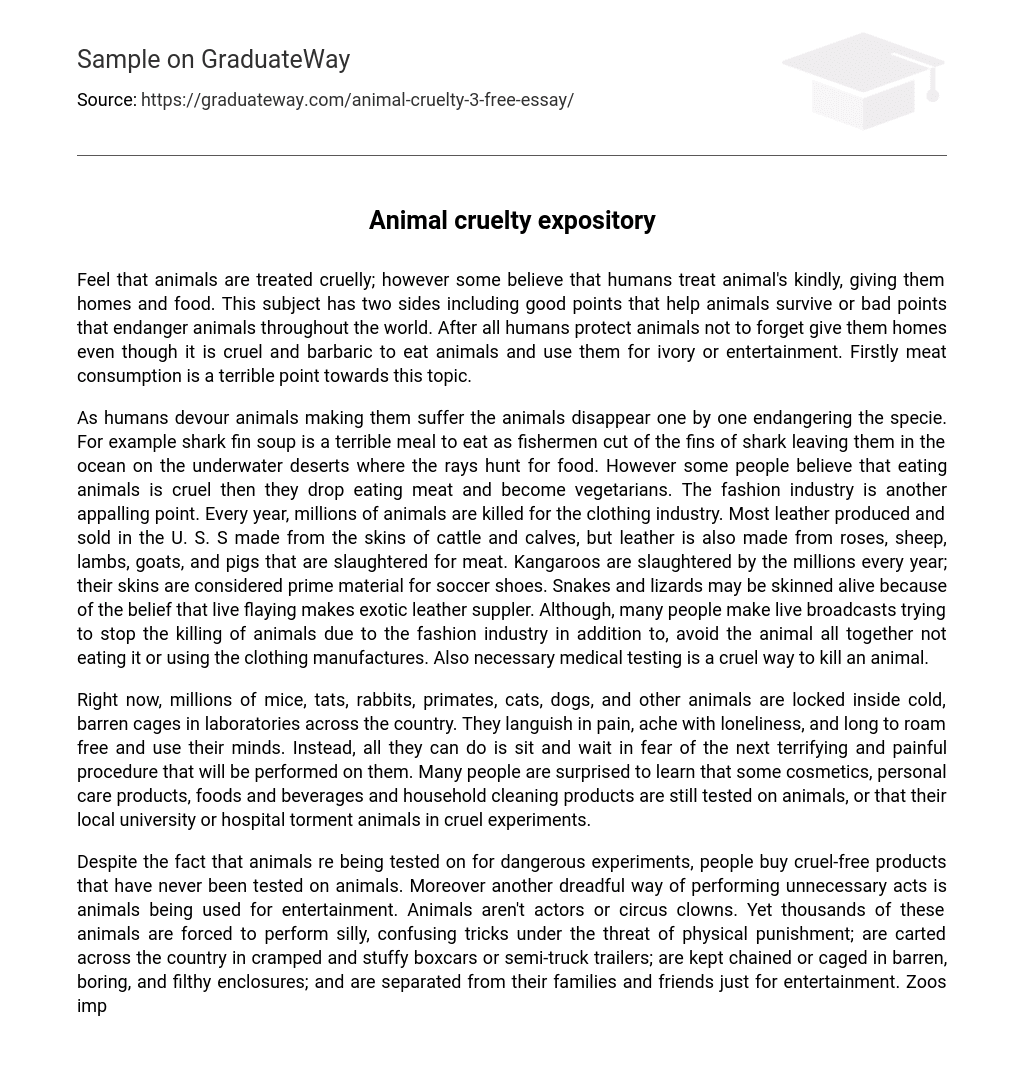There is a divergence of opinions regarding the treatment of animals. Some argue that humans provide them with care, food, and shelter, while others believe they endure cruelty. This ongoing debate encompasses both beneficial factors that aid animal survival and detrimental factors that endanger them globally. Despite disagreements, efforts are made by humans to safeguard animals and offer them habitats. However, the consumption of meat is deemed brutal and savage, exacerbating its harm in relation to this matter.
Consuming animals leads to their suffering and the inevitable disappearance of various species. This is evident in the consumption of shark fin soup, where fishermen remove sharks’ fins and leave them in the ocean, creating an underwater desert for rays searching for food.
Some people recognize the cruelty involved in consuming animals and choose to become vegetarians, completely abstaining from meat.
The fashion industry also contributes to animal deaths on a large scale. Leather, mainly sourced from cattle and calves’ skins but also obtained from horses, sheep, lambs, goats, and pigs slaughtered for meat. Kangaroos are specifically targeted for soccer shoes material and face mass slaughter annually. Snakes and lizards may undergo live flaying due to their supple exotic leather properties.
Despite efforts through live broadcasts to stop animal killing within the fashion industry,
many individuals actively avoid supporting these practices by avoiding animal consumption or using products from such clothing manufacturers.
In addition,
vital medical testing often involves cruel methods
of animal euthanasia.
Currently, animals like mice, rats, rabbits, primates, cats, dogs, and others are housed in laboratories across the country. These animals endure physical pain, loneliness, and a longing for freedom and mental stimulation. Regrettably, their only choice is to remain motionless until they undergo another painful procedure. Numerous individuals are astonished to discover that specific cosmetics, personal care items, food and beverages, as well as household cleaning products continue to be tested on animals. It may also come as a shock to learn that animals suffer through cruel experiments at local universities or hospitals.
Despite the fact that animals are being subjected to dangerous experiments and exploited for entertainment purposes, there is an increasing demand for cruelty-free products and opposition to animal testing. Animals are forced to perform tricks under physical punishment, transported in cramped conditions, and kept chained or caged in unstimulating and unsanitary enclosures, resulting in separation from their families solely for amusement. Moreover, zoos and marine mammal parks provide harsh environments compared to natural habitats. However, some zoos offer appropriate living conditions and responsible breeding. This ongoing debate has persisted for many years and will likely continue for generations.





